
 |
| TV BUYING GUIDE – › How to buy a TV • Surround Sound over HDMI • How to hookup surround sound • Surround Sound Glossary • How to add great sound to your HDTV • Get Internet on your HDTV • Best TV • See over 100 hookup diagrams TV Buying Guide Today, the best TVs are made by Samsung, Sony, and LG. TV Flat Panel Display Technology: Plasma, LCD, LED LCD, OLED, QLED TVs today come in many display technologies. Look at them in the store. You may prefer one type over the other but it is hard to tell the difference sometimes. TV Flat-Panel Displays PLASMA Plasma TVs are not made anymore but plasma was one of the first flat panel TV technologies. Plasma TVs use an electrical charge to make a gas give off ultraviolet light, which in turn causes the individual phosphors to glow. Yes, that's right, phosphors, red, green and blue like in your old CRT TV, only a lot more of them on the screen. Plasma has many advantages but also many disadvantages. Plasma TVs use more power than an equal sized LCD and therefore produce more heat. Brightness and color are the major advantages of Plasma TVs. They produce rich colors along with very deep blacks. Their wide viewing angles allow more people to be able to watch TV comfortably. The pixels of Plasma TVs are lit individually, unlike LCD screens. Because of this, the pixels can be completely turned off to display true black colors. Plasma TVs tend to reflect more light off the screen than LCDs so light from a window or lamp may cause a problem. Plasma TV produces its own lighting and does not need a backlight. Plasma also has faster refresh rates than LCD. Plasma has a smoother look, more like your old phosphor based CRT TV, only better. LCD Liquid Crystal Display LCD TVs use a bright backlight that shines through a layer of liquid crystals, which move to transmit or block the light. LCD TVs need a backlight because unlike Plasmas, they do not produce light for each pixel on the screen. LCD TVs are more popular than Plasma. Samsung, Sony, LG stopped making Plasma TVs. LCD TVs are bright and have sharp looking displays, weigh less than Plasmas and are available in the smaller screen sizes for kitchen and bedroom. LED LCD TV In the drive for thinner and more energy efficient TVs, a trend is to use LED (Light Emitting Diode) as the "backlight" for LCD HDTVs. Note that in spite of what some manufacturers would have you think, "LED TVs" are simply LCD TVs with LED backlights. The LED LCD means the backlight is LEDs and not the older CCFL fluorescent tube lights. Using LEDs as backlights allows for a much thinner TV and in the long run means longer-lasting backlights. LED TVs are a type of LCD TV. They are also referred to as LED-backlit TV. The Light Emitting Diodes (LED) are used to light the liquid crystal display (LCD), providing stunningly crisp images and colors. LED TVs are more energy efficient, the LED backlighting enhances LCD performance and improves image clarity and coloring, and they are super slim, perfect for mounting on a wall. LED backlight: "LED TVs" are LCD TVs with an LED backlight instead of a standard fluorescent backlight. LEDs consume less power and produce better color response than traditional backlights do, and they also make it possible to create a much thinner LCD TV. Dynamic backlight or local dimming: Some LCD TVs with LED backlights have the LEDs in a matrix behind the LCD panel, as opposed to other designs that put the LEDs along the edge of the panel to make a thinner TV set. It is possible to turn the LEDs in some sections down or even off, independently of the rest of the backlight. This means that the set can lower the backlight for portions of an image that are dimmer and do not need the backlight's full power. The result is that the set can increase the contrast significantly, as well as save energy. OLED Organic LED The real winner is going to be OLED displays with paper thin flex screens. OLED stands for organic light-emitting diode and uses organic materials, such as carbon, to create light when it’s directly supplied by an electrical current. OLED TVs do not need a backlight to illuminate the screen area (unlike LED and QLED). That means OLED TVs can be very thin and even flexible. OLED screens can even be transparent. OLED panels tend to be more expensive, most over $1,000. Bottom line, OLED is the future but LED LCD TV is more affordable and Samsung leads the pack. QLED Quantum-Dot LED QLEDs represent the pinnacle of quality in Samsung’s TVs, with some QLED models sporting 8K resolutions. QLED stands for quantum dot LED TV. It’s a variation of LED, relying on a backlight. When the light from the LED backlight hits the quantum dots — microscopic molecules within the display — the quantum dots emit different colored lights. Although Samsung uses the term QLED, other TV creators such as Hisense and Vizio also use quantum dots in LCD TVs, so it isn’t proprietary to Samsung. Beyond better resolution, there are a few reasons you may choose to go with a QLED TV. The brightness is about 50 to 100 times brighter than LCDs. Plus, it uses less power than other types of TV displays — for instance, QLED is up to two times more energy-efficient than OLED screens. QLED also avoids the risk of the dreaded screen burn-in that afflicts so many other types of displays. They do, however, require a backlight just like standard LED screens. That said, blues may look a bit off at times and some QLED screens suffer from light bleed — a slight haze that affects objects in a scene. QLED is a clear step up from LED. TV Video Resolution: TVs have a minimum video resolution of 720p. Many of the top TVs now are capable of displaying 4K resolution which is what 4K Blu-ray and PlayStation output. 1080p is superior to 720p but on a TV that is less than 50 inches, the chances of you being able to tell the difference are small. If you are shopping in the 50+ screen size range, you may want to consider 4K resolution. Almost all TV sets 40 inches or larger have 1080p or 4K resolution, which is 1,920 by 1,080 pixels or 3,840 by 2,160 pixels. The 1080p resolution will give you very good detail available for HD content. For some smaller TV sizes, 1366 by 768 pixels is often a lower-cost choice, but a 720p set has to scale 1080p images down to match its native resolution. This interpolation may introduce imaging artifacts, and the image may not appear quite as sharp or have the depth of the picture on a 1080p set. 720p models are available in many sizes as a lower-cost option, but 720p is going away sooner. All else being equal, you should pick a 4K model, which will better match much of the content you can now get from broadcast, streaming, and satellite services, and will match the native resolution of a 4K Blu-ray Disc player. 8K TV models are available but 8K content is not generally offered yet. TV Contrast: This spec refers to the difference between the darkest images and the lightest images that a screen can produce; in general, it is determined by how dark the blacks are. Contrast is probably the most important factor in determining image quality after resolution. Unfortunately, manufacturers' methods for measuring and specifying contrast are almost useless for helping you predict how the screen will look. Manufacturers use full-screen measurements, all black and all white, in a darkened room. An all-black or all-white screen is not what people watch. When you have actual content on the screen, you get internal reflections, ambient lighting effects, and other optical crosstalk that results in the light from one section of an image affecting the light levels of another. TV Tuners Your TV should have a digital tuner for over-the-air TV broadcasts. This is called an ATSC tuner. In addition, the set may have a NTSC tuner for analog TV broadcasts. Some TVs also have a QAM tuner for unscrambled Cable TV channels. You need a proprietary set-top-box for satellite, cable TV or other pay TV services. The ATSC 1.0 tuner is standard while some TV makers include an ATSC 3.0 tuner for possible 4K broadcasts. You need a VHF/UHF TV antenna connected to the TV using an RG-6 coaxial cable for local over-the-air broadcasts. Be sure to do a "channel scan" to save all the local channels you can receive. Internet connectivity: TVs offer the ability to connect to your home network's router--either through an ethernet cable (LAN) or wirelessly--so that you can view content stored on the computers on your network, or even access content from the Internet if you have broadband service and a Wi-Fi router. Different sets have different features, such as Amazon, Netflix, or YouTube, so if you want a particular service, make sure that it's included before you commit to a TV. Manufacturers are adding new services all the time, even to their existing models, so it pays to get the latest information. Note that if you use a wireless connection, Wi-Fi 802.11ax will give you the fastest performance. Which is better, Wi-Fi or wired Ethernet? 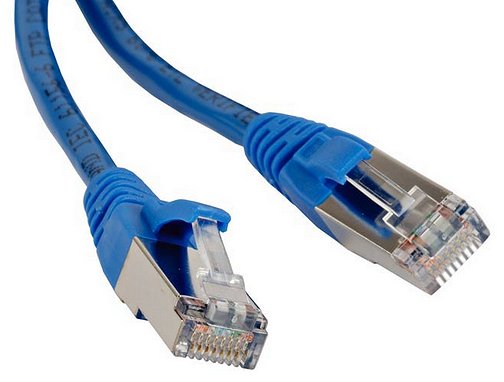 The wired ethernet cable from TV to router is faster, more secure and more reliable while Wireless (Wi-Fi) is more convenient. Refresh Rates and Motion Blur: The nature of LCDs leaves that technology prone to motion blurring. To create an image, the LCD's tiny, cylindrical molecules of liquid crystal material respond to electrical charges and move to either transmit or block the light from the panel's backlight. Making the molecules move takes time, however, and if they don't move quickly enough, they can produce motion blur on the screen. This effect can be most noticeable during sports broadcasts in which you're trying to follow a small object on the screen, such as a baseball or a hockey puck. Generally it isn't a problem for typical movie or television-program images. Some LCDs now have higher refresh rates of 120Hz or 240Hz, designed to reduce motion blur. 60Hz is the basic refresh rate and is found on only the low-end LCD TVs. Fast moving scenes may blur somewhat and if this bothers you, opt for a faster rate. 120Hz refresh rate: A set running at this rate takes the normal 60 images per second from the video signal and creates an intermediate image between every pair to create 120 images per second. This increase in refresh rate can help reduce motion blurring in LCD TVs. 240Hz refresh rate: Some newer TV sets double the 120Hz approach, creating three intermediate images per pair of frames. Other models simply use the 120 frames but flash the backlight two times per frame. Both of these approaches are intended to reduce motion blur even more in LCD TVs, but you are not likely to notice the difference. TV Connections: 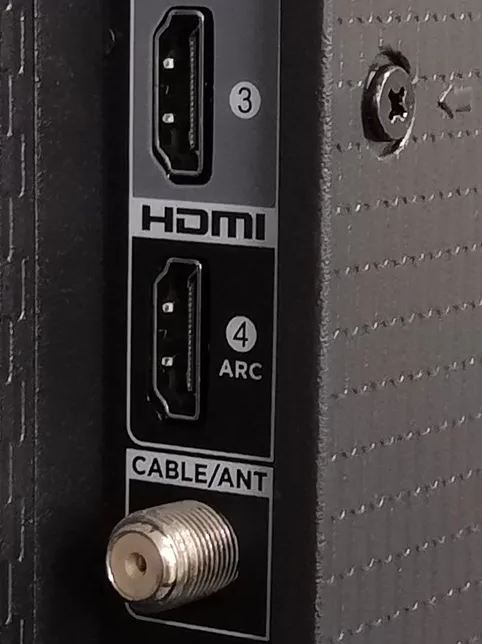 You have to get the image from your Bluray player or set-top box into the TV set, and to do so you need to use a video connection. Only three connectors, HDMI, component video, and "VGA", can deliver HD-resolution images, and of those, only HDMI is capable of providing full 1080p or 4K over an HDCP-protected connection. You want many HDMI connections on your TV. Also, to get more HDMI inputs, you can get an HDMI switch box. * HDMI: This is a digital connection, so it delivers the image data exactly as the player or set-top box sends it. HDMI can also carry sound--eliminating the need for extra cables--and it may let you control more than one device with a single click of the remote. HDMI is capable of 4K, 1080p, 720p. The newest version of HDMI is 2.1, which adds more features such as the ability to carry a network connection. HDMI is definitely the connection of choice, as it gives you the most accurate transfer of the image data, and it also supports the HDCP copy-protection features that can help guarantee that you get the best-quality image from your source. HDMI ARC/eARC: The HDMI audio return channel allows audio to be sent from the TV to a soundbar or A/V Receiver for surround sound. Most TVs also offer an optical audio output. The optical connection is limited to Dolby Digital 5.1 but the HDMI eARC has the newer lossless audio formats and lossy Dolby Digital Plus capability. Most TVs today offer at least three HDMI connections, while many provide four, and some have even more. Get as many HDMI connections as you can; doing so will allow you the most flexibility in connecting your other devices. For instance, you'll probably want to connect a set-top DVR, a Blu-ray player, a camcorder, or other gadgets like streaming media players (ROKU) , which links your network to your TV for displaying media content. If possible, use HDMI for your high-definition connections, and try to buy a TV that has more connections than you currently need, to allow for the future expansion of your home entertainment system. If you have too few HDMI ports on your set, you can always add a HDMI switch that will multiply how many devices you can connect to a single input on your HDTV; but this device adds a level of complexity. Note: HDMI cables do not have to cost very much. A $12 cable bought on the Internet is likely to perform just as well as a $120 cable purchased in some stores. Try a cheap cable first, and if it works, you're done. If it doesn't, you can then try a more expensive cable to see if it solves the problem. 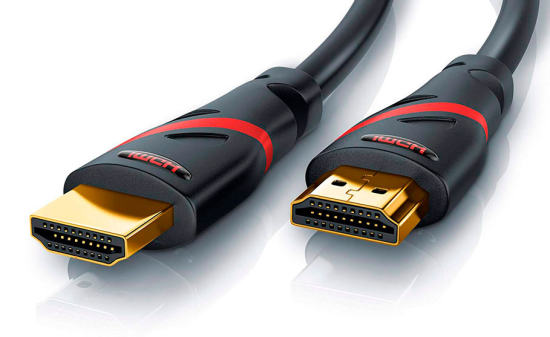 HDMI Cable * Component video: This connection uses three separate RCA connectors, marked red, green, and blue for video. An analog connection, it can handle up to 1080p signals, but it cannot carry the HDCP copy-protection signal required for some devices. In theory, it may not be as good as a digital connection--especially over a long distance--but you're not likely to notice the difference. It requires an analog audio connection (white, red RCA cables). * VGA: This refers to the d-Sub 15 connector that computers use to make an analog connection to a display. In many ways, it's similar to the component video connection. Often it's the easiest way to link a computer to your HDTV. This connection can handle up to 1080p resolution HD. In addition to those three connectors, you are also likely to find two others: S-Video and composite video. They can carry only standard-definition video images, typically from older devices such as a DVD player, a camcorder, or a VCR. Depending on how you set your TV, it can scale standard-def images up to HD (interpolation). * Composite video: This is a single RCA plug, typically yellow. Cables with this plug often also have the standard red and white RCA plugs for stereo audio channels. Some TVs use a small 3.5mm multi port which combines the yellow, white and red connections. Usually it is yellow in color, the size of a headphone jack. 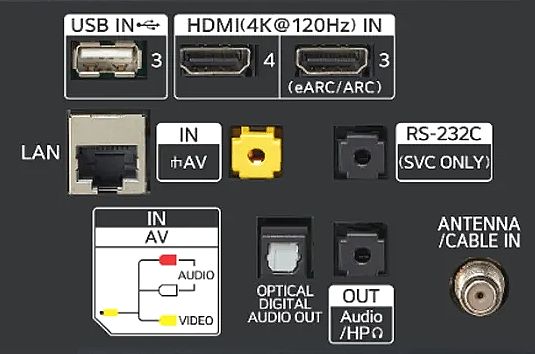 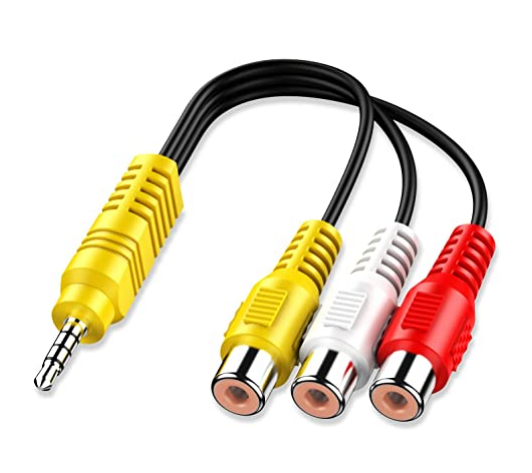 Adapter cable for composite AV connections USB Ports: Today your TV needs a computer style USB port to transfer data into the TV for updates and user data. Soundbar: Adding a soundbar to your TV setup will give you much better sound than you get from the TV built-in speakers. Connect using the HDMI ARC/eARC port on the TV and the soundbar. Automatic brightness control: This function will adjust the brightness of your set's image depending on the amount of light in the room; it can be a significant power-saving feature. Automatic volume leveling: This feature will reduce the difference in volume levels, especially between TV programs and their commercials, which tend to be much louder. VESA mount holes: Many people now hang their flat-panel TVs on the wall, and they often do the job themselves instead of hiring someone. Most wall mounts are designed to match the standard VESA hole patterns, so you may find it easier to mount a flat-panel TV that offers one or more of these standardized hole patterns on its rear panel. Now you know what features to look for in a HDTV. The decision is difficult as the choices are many and the cost, although getting less, is still a chunck of change. Remember you need a High-Definition source (HD cable, HD satellite, Bluray, broadcast HDTV) in order to get HD resolution on your screen. • HDTV Antennas • Cable connections for HDTV • Calculate Screen size for HDTV • HDTV Facts You Should Know About • HDTV Antennas • Blu-ray audio surround sound • Surround Sound • HDMI Switch box • VCR Basics COLUMBIA ISA Audio Video Empowering consumers through information. |